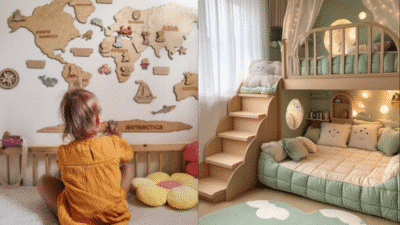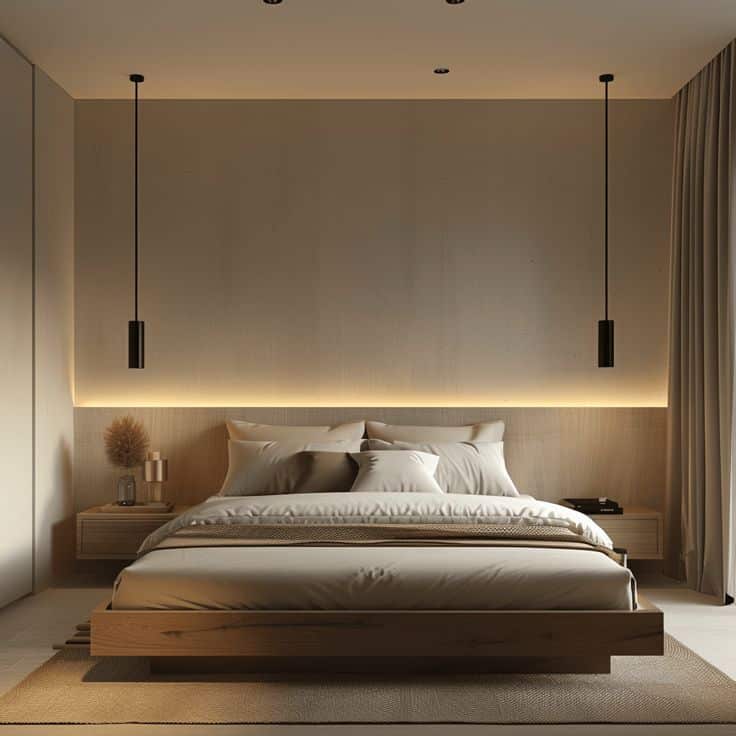
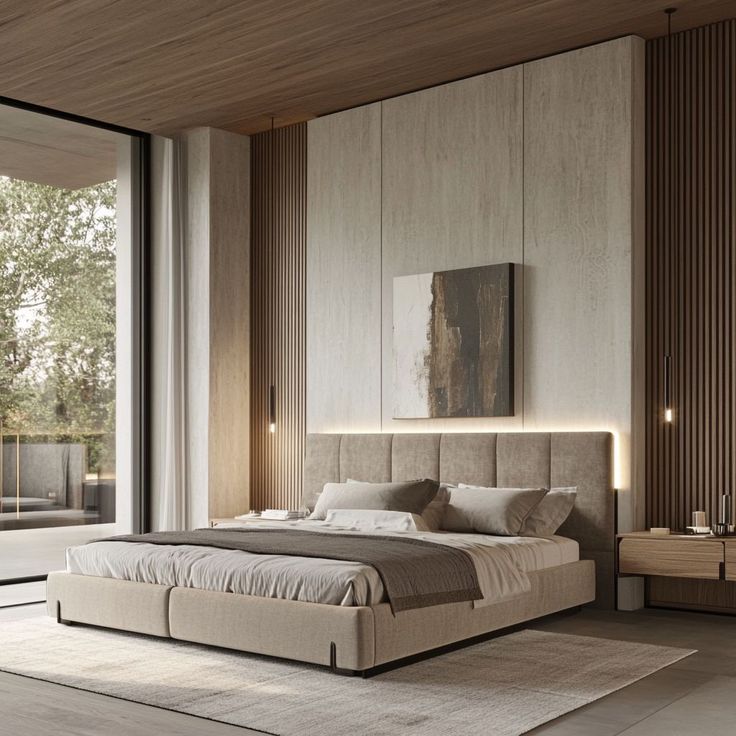
Creating a stylish bedroom that feels both comfortable and calm is about more than just looks. A bedroom that balances cozy elements with clean design helps promote relaxation and better rest. This means choosing the right colors, furniture, and lighting to build a peaceful atmosphere.
Comfort comes from how the space feels as much as how it appears. Soft fabrics, functional furniture, and gentle lighting work together to create a soothing environment. Personal touches also make the room feel inviting without cluttering it.
A well-designed bedroom supports calmness by organizing the space thoughtfully and including natural or sustainable materials. This keeps the room simple and fresh, making it easier to unwind after a long day.
Key Takeways
- Comfort and style come from balanced colors, furniture, and lighting.
- Soft textiles and personal touches enhance a calm bedroom.
- Simple layouts and eco-friendly items promote relaxation.
Key Elements of Stylish Bedroom Interiors
A stylish bedroom blends visual appeal with comfort. It uses colors, furniture, and lighting to create a calm space that feels both inviting and elegant.
Balancing Style and Comfort
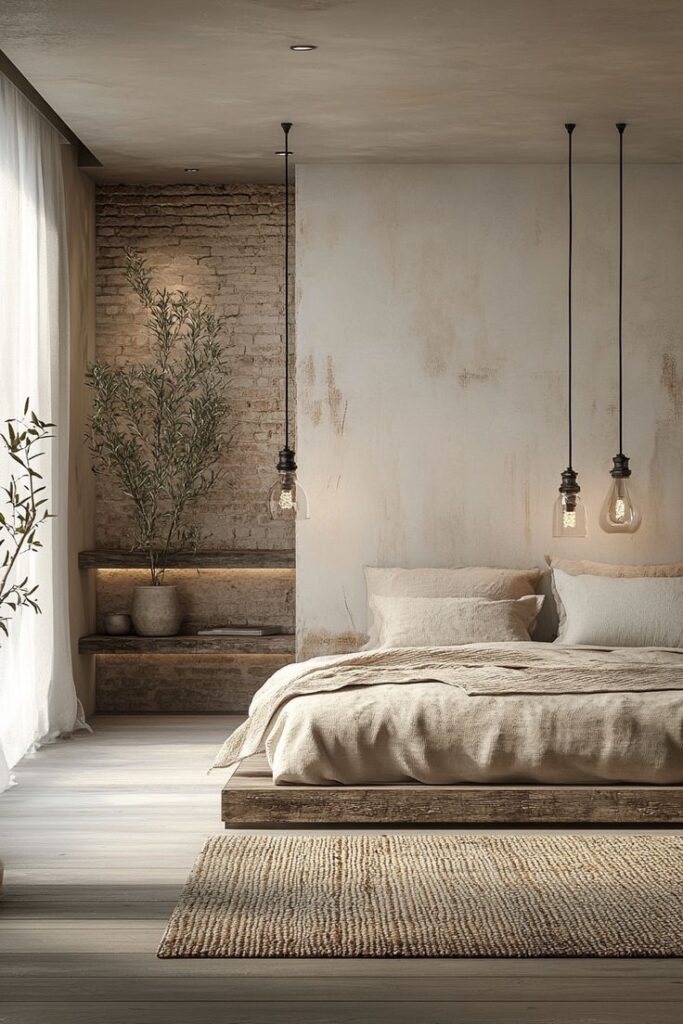
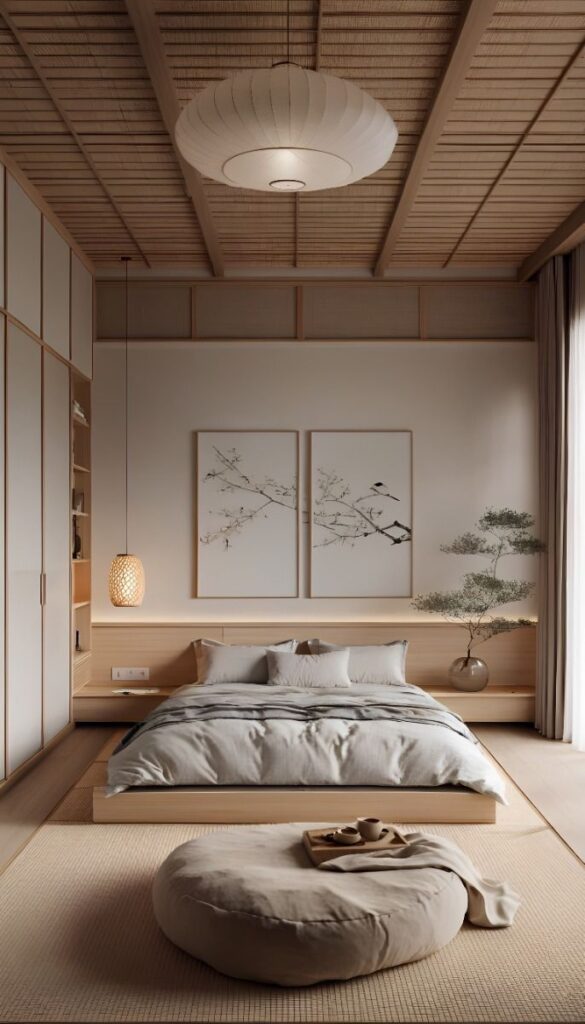
A bedroom should look good and feel good. Comfortable furniture like a soft bed and supportive mattress is important. Upholstered headboards add style and comfort by providing a soft backrest.
Texture plays a big role. Soft rugs, cozy blankets, and smooth sheets add layers that make the room warm and welcoming. Avoid overly rigid or sharp furniture that might look neat but feels uncomfortable.
Balance decorative items with functional pieces. Storage solutions like bedside tables and dressers keep the room tidy without crowding the space.
Selecting a Cohesive Color Palette
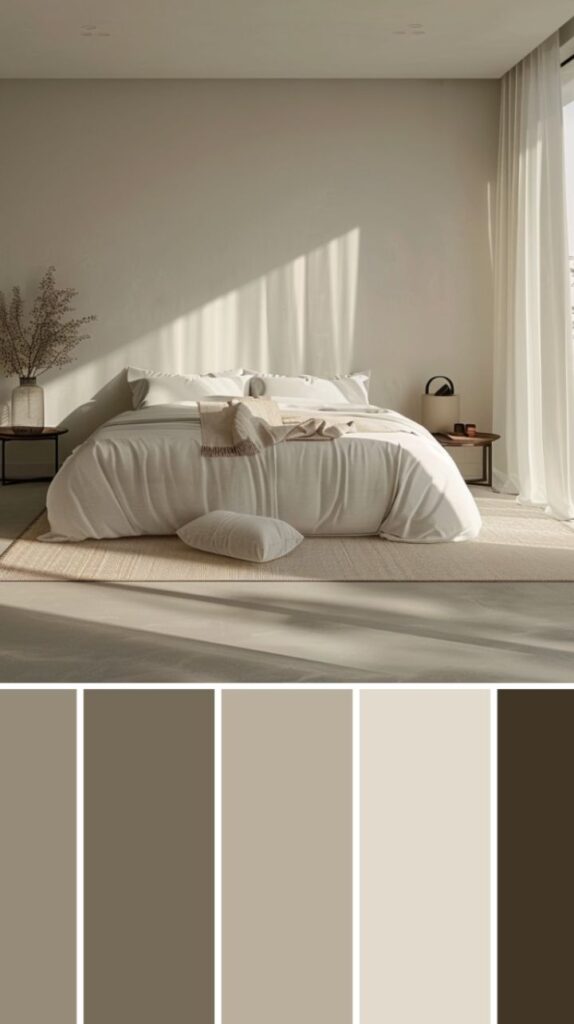
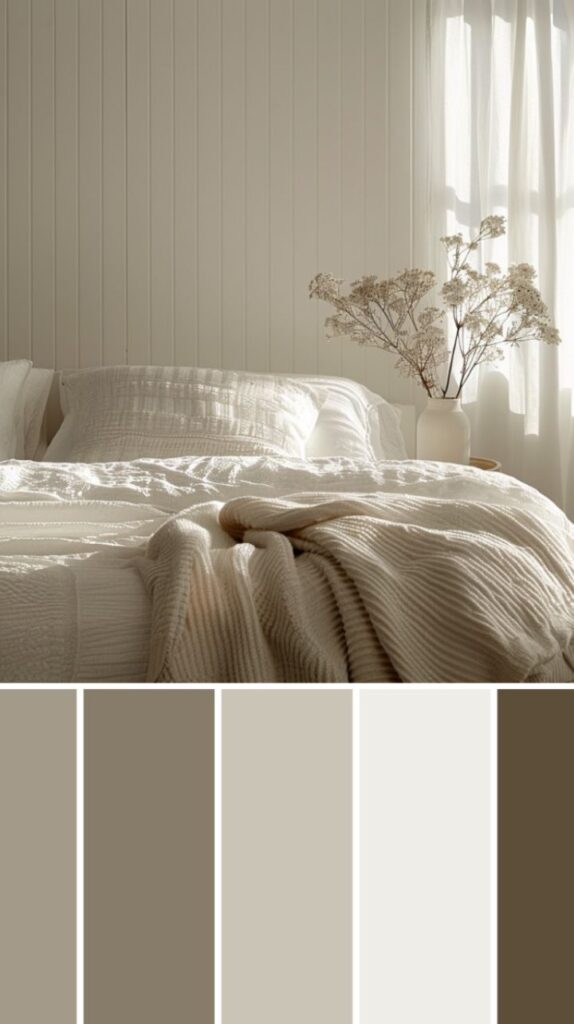
Choosing the right colors helps pull the room together. Neutral tones such as beige, gray, and soft white create a calm base. They also make it easy to switch accent colors later.
Accent colors like muted blues, greens, or pastels work well, adding personality without overwhelming. Use these colors in pillows, curtains, or a single wall.
It’s best to limit the palette to three main colors to avoid chaos. Consistent use of color across walls, linens, and décor keeps the space unified and stylish.
Creating a Tranquil Atmosphere
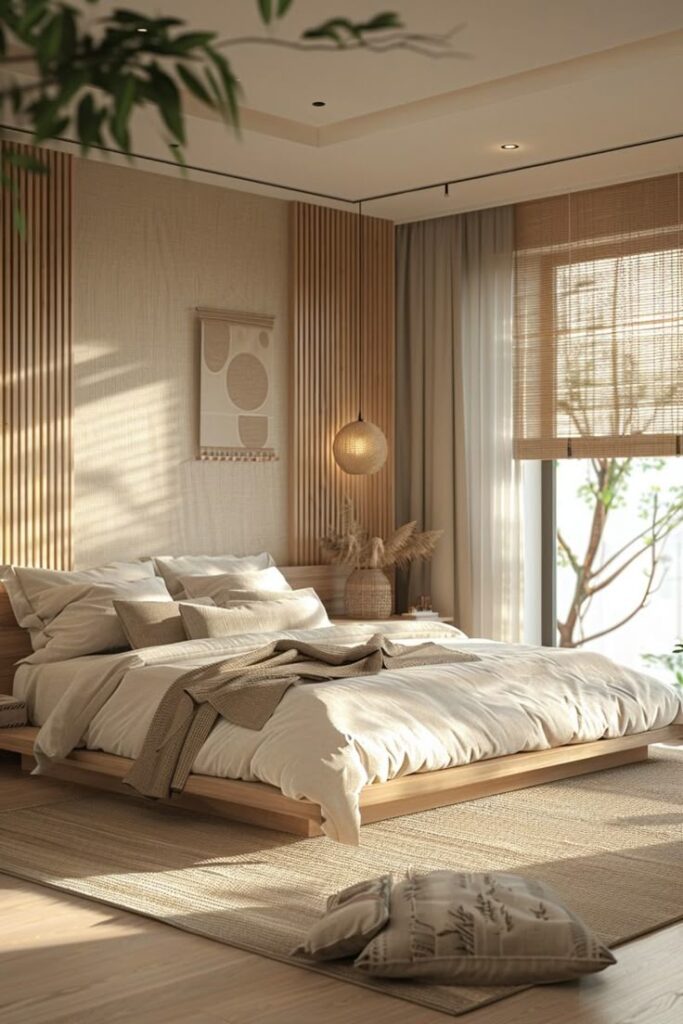
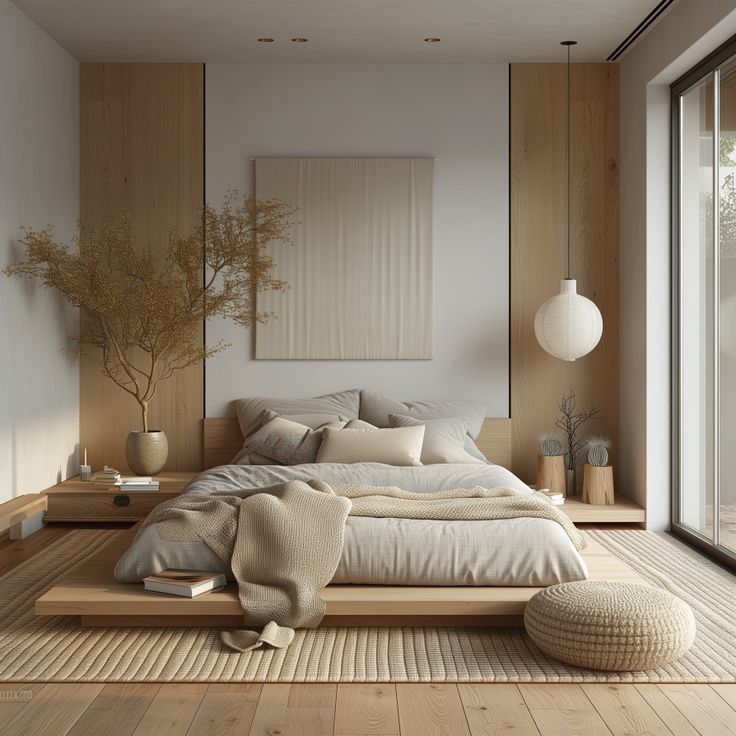
Lighting affects mood and calmness. Soft, warm lights from lamps and sconces are better than harsh overhead lights. Adjustable lighting allows control for reading or relaxing.
Adding natural elements, like plants or wood furniture, brings calm energy. Plants also improve air quality, which promotes relaxation.
Keep clutter to a minimum. Clear surfaces and organized areas create an uncluttered feel that helps people unwind. Using simple, clean-lined furniture supports this peaceful vibe.
Choosing the Ideal Bedroom Furniture
Selecting bedroom furniture involves balancing comfort, functionality, and style. The right pieces provide support for rest, keep the room organized, and add a touch of personality without overwhelming the space.
Comfortable Beds and Headboards
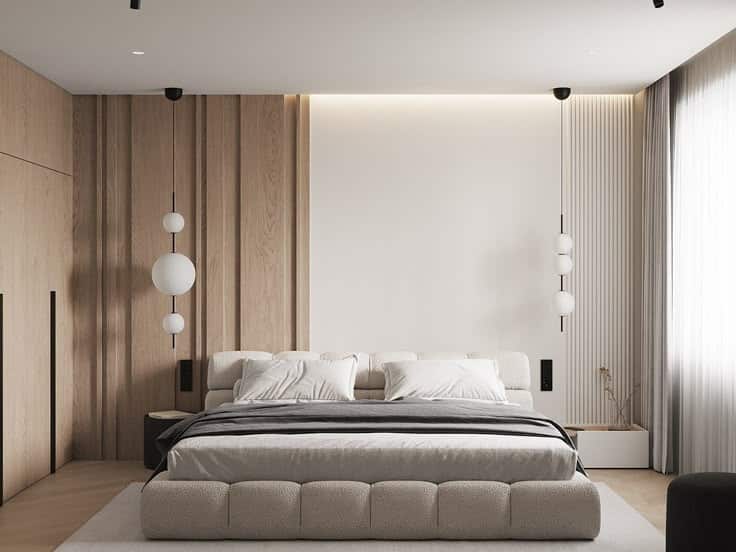
A bed’s comfort is a top priority. It should support good sleep posture with a mattress that suits personal firmness preferences. Memory foam, hybrid, and innerspring mattresses each offer different levels of support and pressure relief.
Headboards enhance comfort and style. Padded or upholstered headboards add softness for sitting up and reading. Wooden or metal designs provide structure and a distinct visual appeal. The size of the bed and headboard must fit the room’s dimensions to avoid crowding.
Smart Storage Solutions
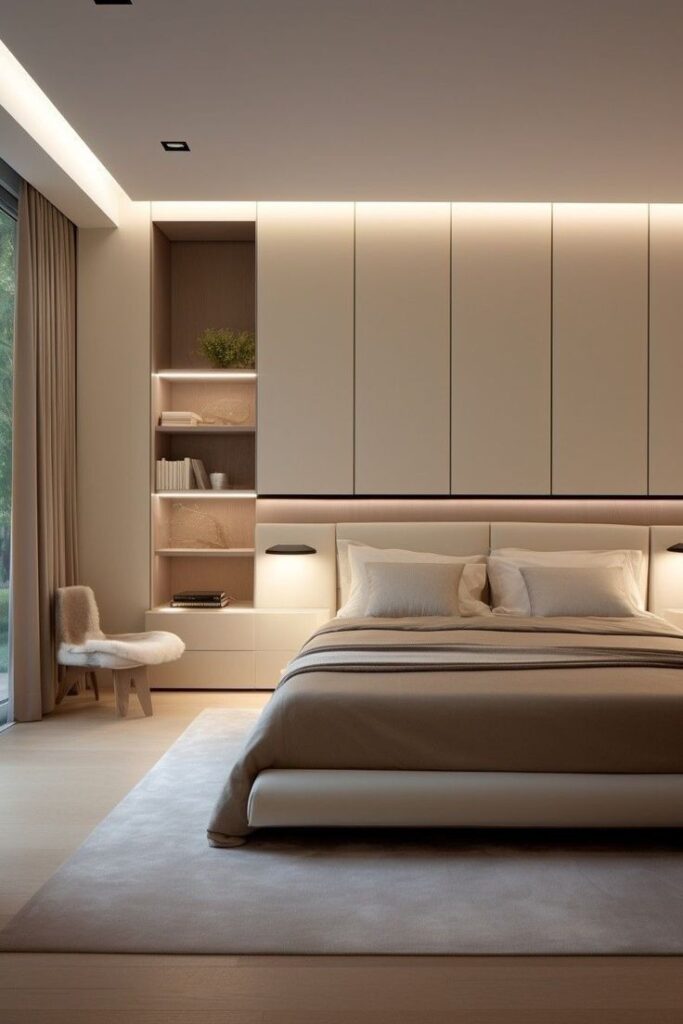
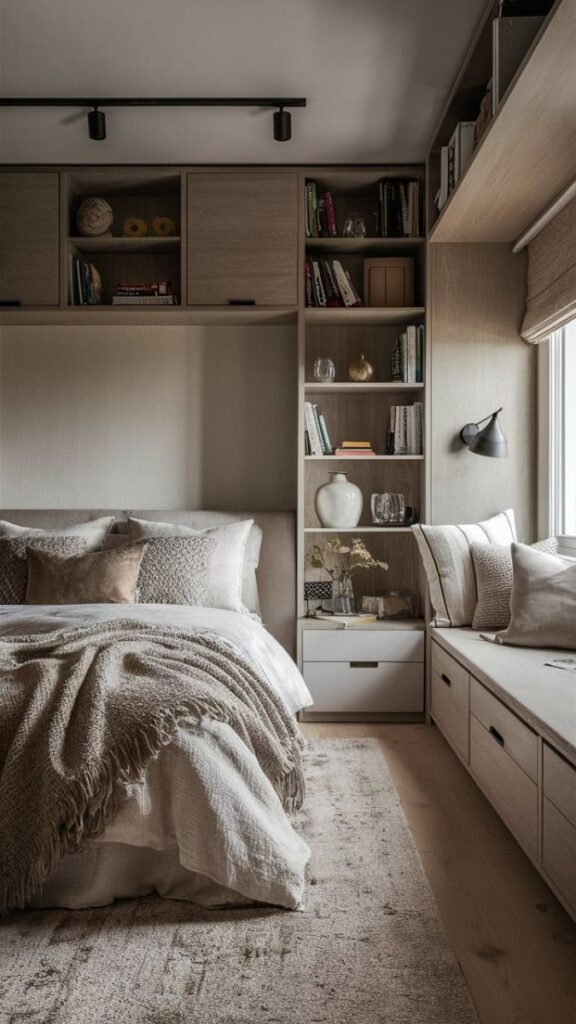
Storage furniture helps keep the bedroom tidy. Beds with built-in drawers or lift-up storage use space efficiently. Wardrobes should have adjustable shelves and compartments to fit different items.
Nightstands with multiple drawers keep essentials close but hidden. Choosing pieces in light wood or neutral tones supports a calm atmosphere. Matching storage furniture with the bed and room style ensures a cohesive look.
Accent Chairs and Benches
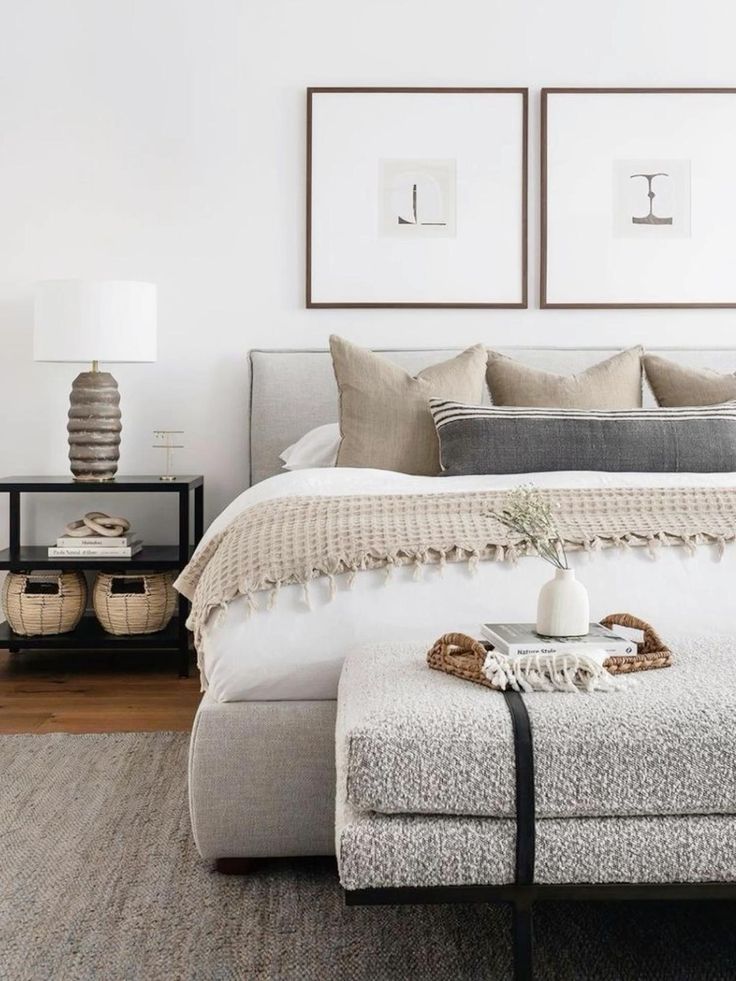
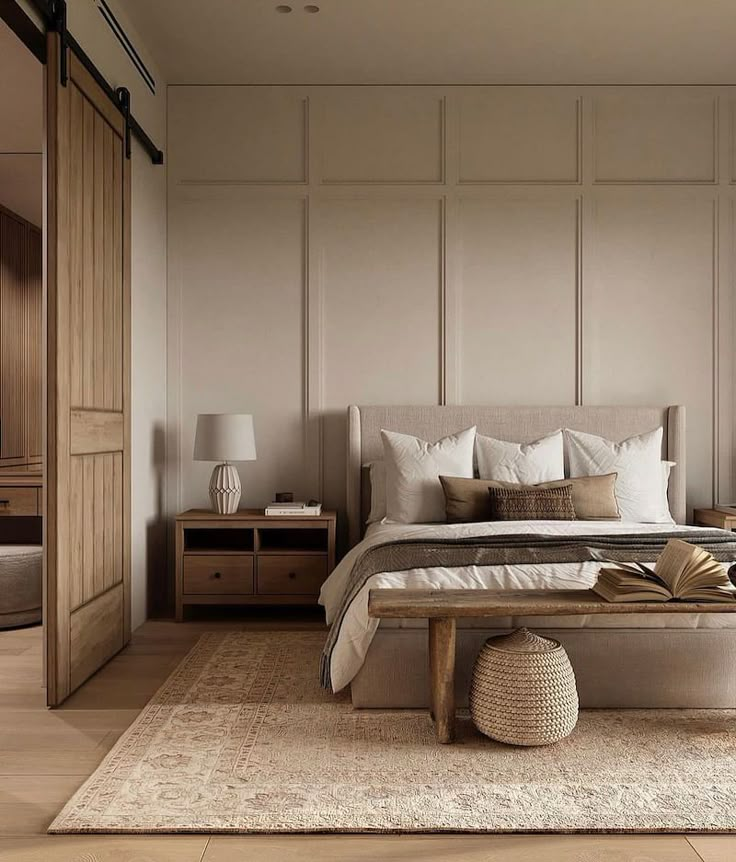
Accent chairs provide a comfortable spot for reading or dressing. They should be plush but not bulky, with fabrics that complement bedding. Chairs with armrests and proper back support increase comfort.
Benches placed at the foot of the bed add seating and storage if they include compartments or lift-up seats. Choose benches in durable materials that match room colors. Both chairs and benches enhance usability and style without crowding the room.
Incorporating Calming Textiles and Materials
Calming textiles and materials focus on comfort, softness, and natural elements. These choices help create a restful space and improve the overall feel of the bedroom. Using the right bedding, natural materials, and layered textures play a key role in achieving this balance.
Luxurious Bedding Options
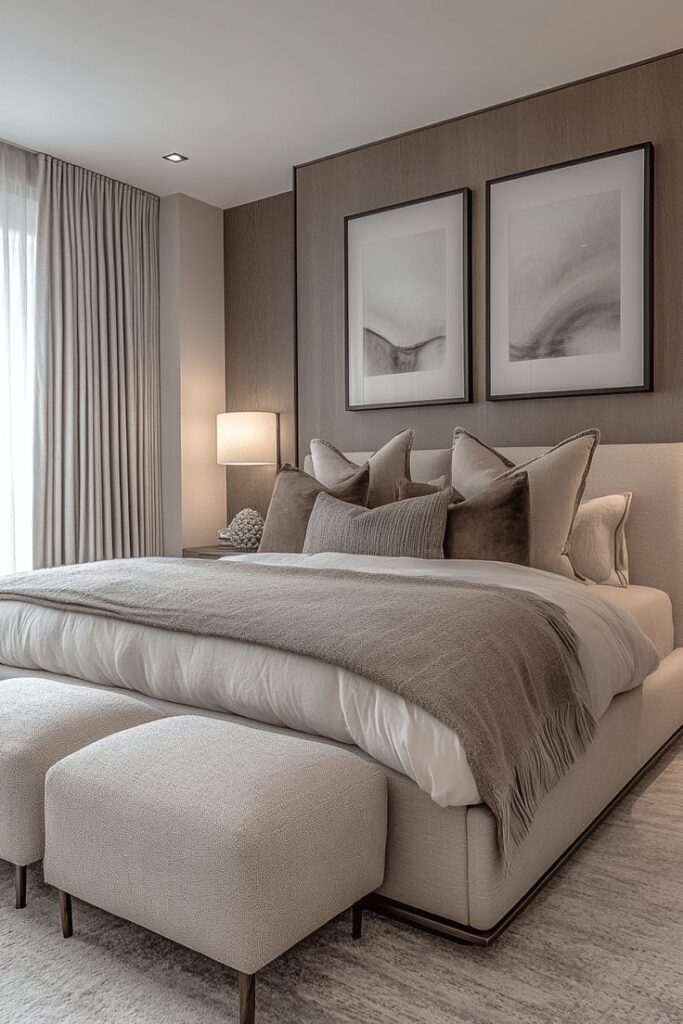
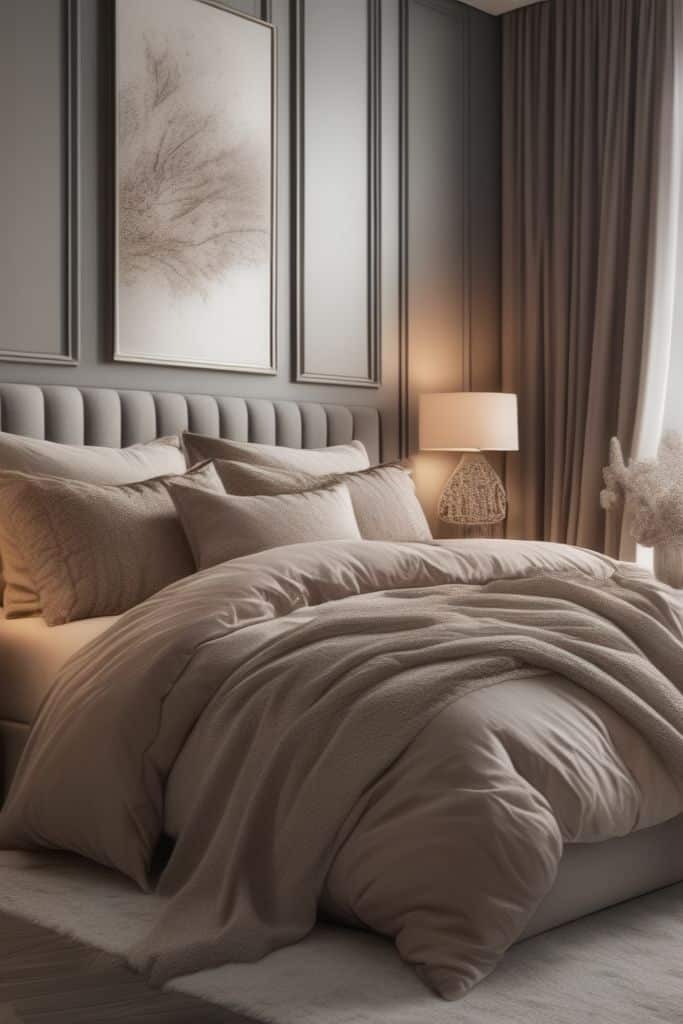
Comfortable bedding is essential for a relaxing bedroom. High-thread-count cotton sheets, like Egyptian or Pima cotton, provide a soft and breathable surface. Linen sheets work well too, offering a slightly textured feel that cools the skin.
Weighted blankets can add a sense of security and calm. They gently apply pressure, which some find soothing at night. Silk pillowcases reduce friction, helping prevent skin irritation.
When choosing bedding colors, soft neutrals or pastel tones tend to boost relaxation. Avoid bright or bold patterns that can feel busy or energizing.
Natural Materials and Their Benefits
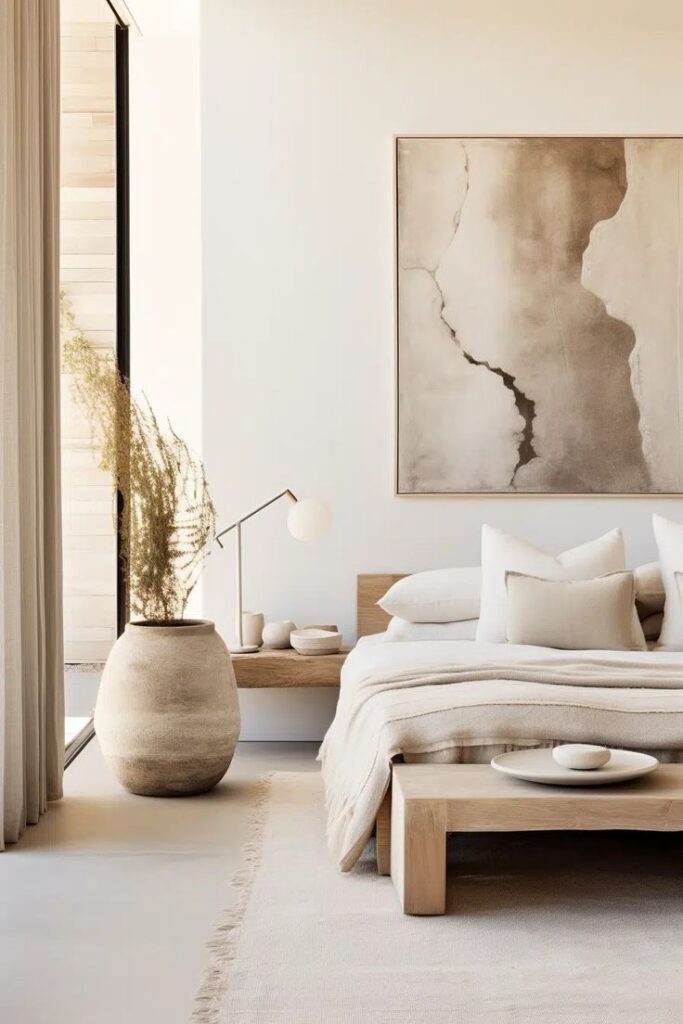
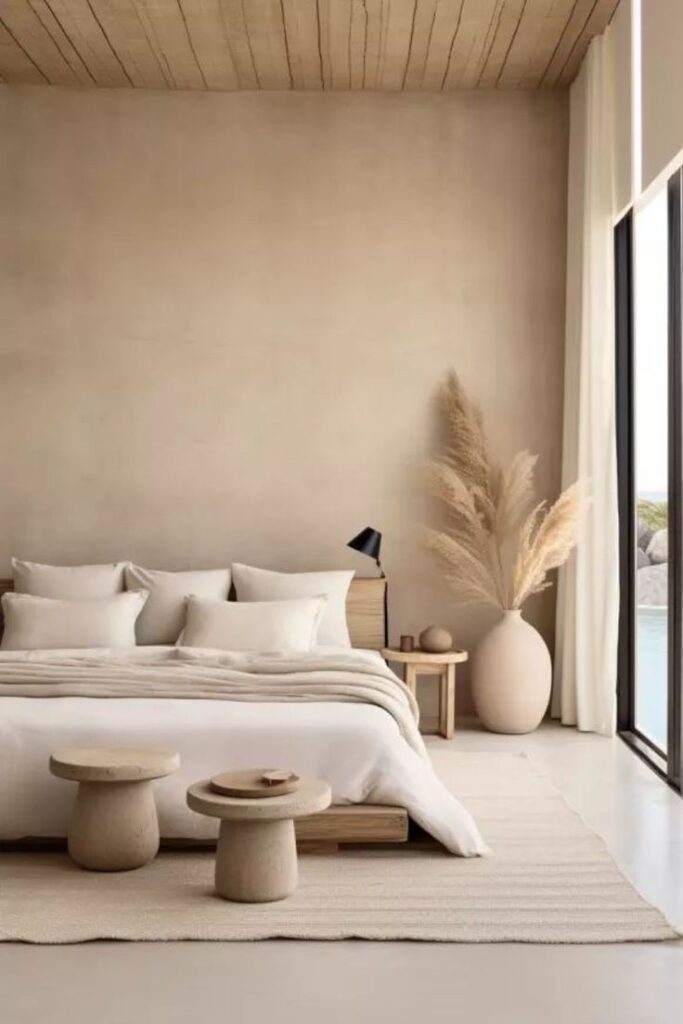
Natural materials bring warmth and a connection to nature indoors. Wood furniture, bamboo rugs, and cotton or wool textiles add texture and durability.
Materials such as wool offer good insulation, keeping the bedroom cozy without overheating. Bamboo is moisture-wicking and eco-friendly, making it ideal for warmer climates.
Many natural fibers are hypoallergenic and resist dust mites, helping people with allergies. They also tend to last longer and become softer with use, making the bedroom feel more inviting over time.
Layering Textures for Softness
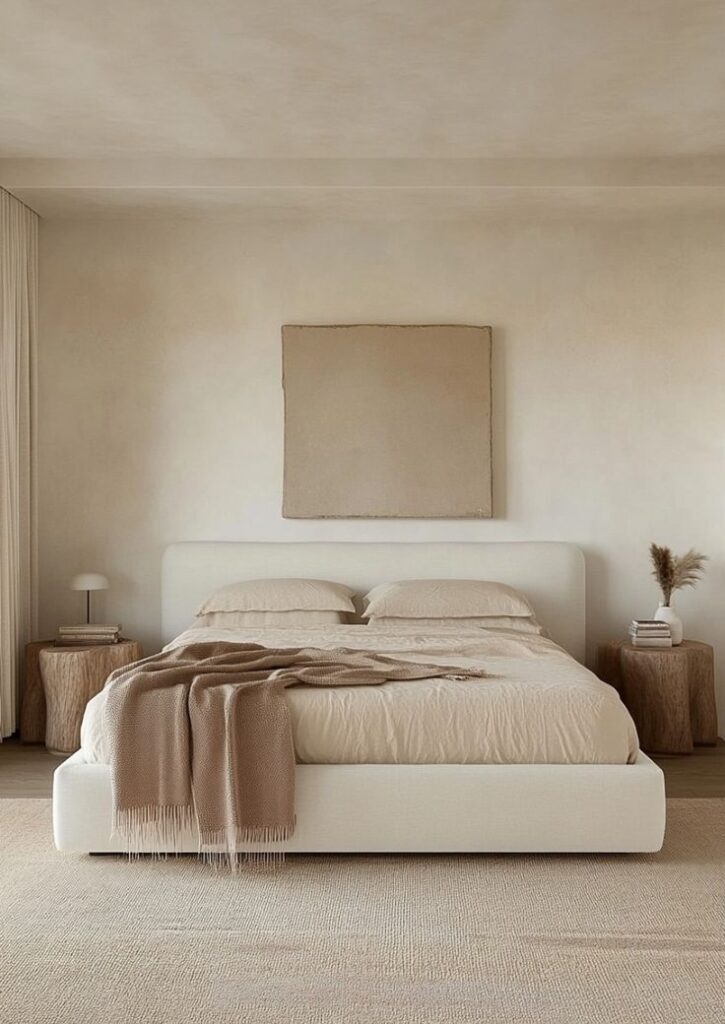
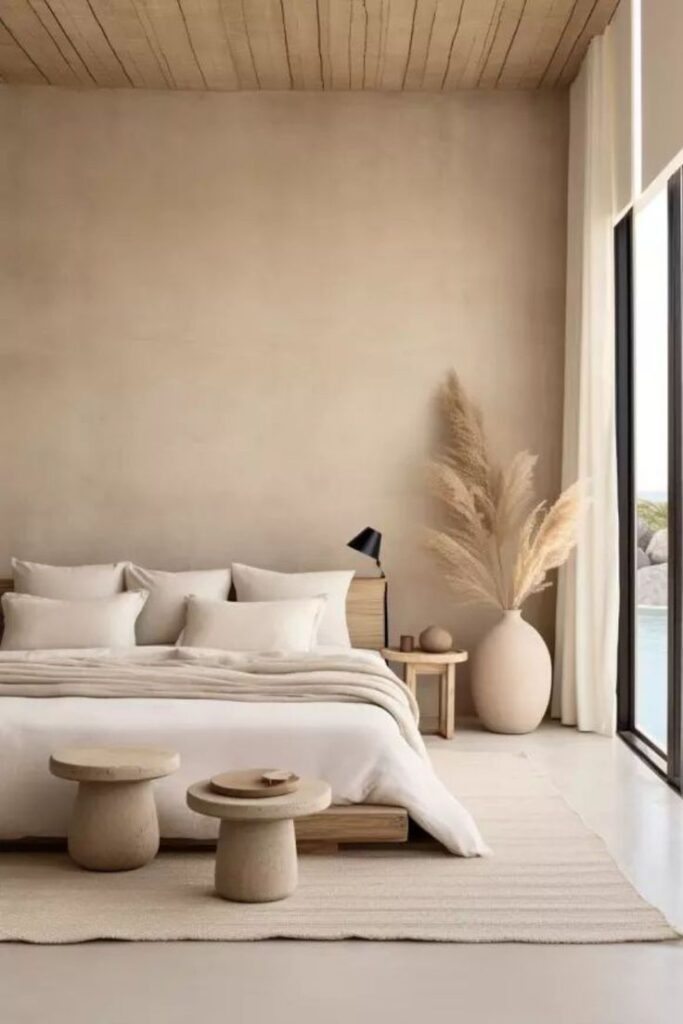
Combining different textures creates a sense of depth and comfort. For example, pairing a soft cotton duvet with a chunky knit throw adds both visual and tactile interest.
Floor rugs made from jute or wool add warmth underfoot and reduce echo in the room. Using pillows with varied fabrics like velvet, linen, and faux fur provides comfort and style.
Layering also helps regulate temperature. Multiple thin blankets are better than one thick cover, allowing easy adjustment for comfort during the night.
Optimizing Bedroom Lighting for Ambience
Good bedroom lighting balances function and mood. It should help with daily activities while creating a restful, calm space. Using the right types of lighting supports both comfort and style.
Soft Lighting Techniques
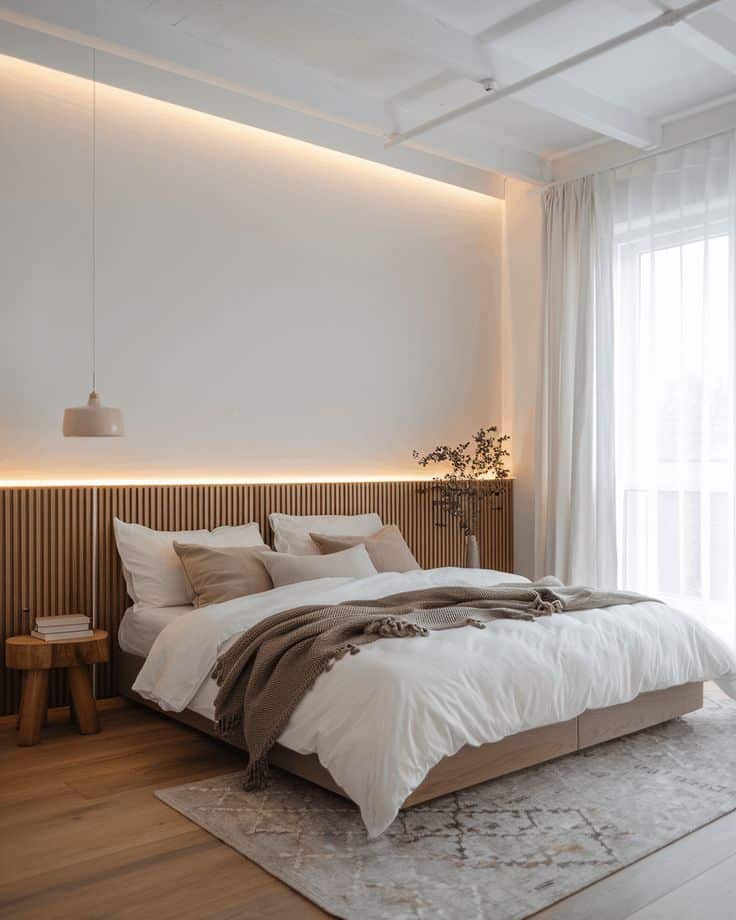
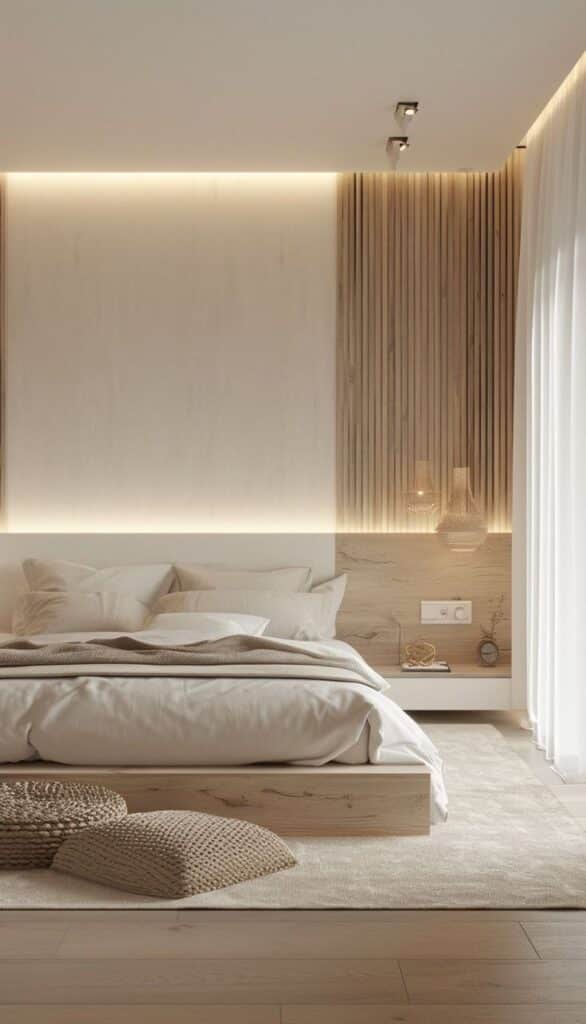
Soft lighting reduces harsh shadows and makes the room feel cozy. Lampshades, dimmers, and warm-colored bulbs work well. These elements help create a gentle glow that soothes the eyes.
Positioning lights behind furniture or using indirect sources can also soften brightness. Avoid strong overhead lights for most of the evening. Instead, use multiple low-wattage bulbs placed around the room.
Examples of soft lighting sources:
- Table lamps with fabric shades
- Floor lamps with diffusers
- Wall sconces facing upward or downward
This type of lighting encourages relaxation and blends well with calm bedroom colors.
Task and Accent Lighting
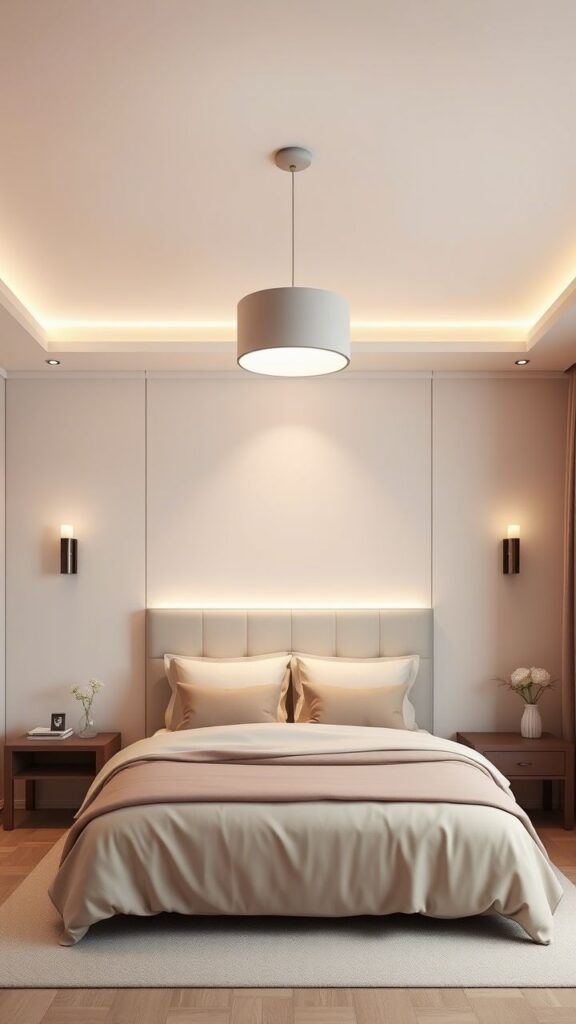
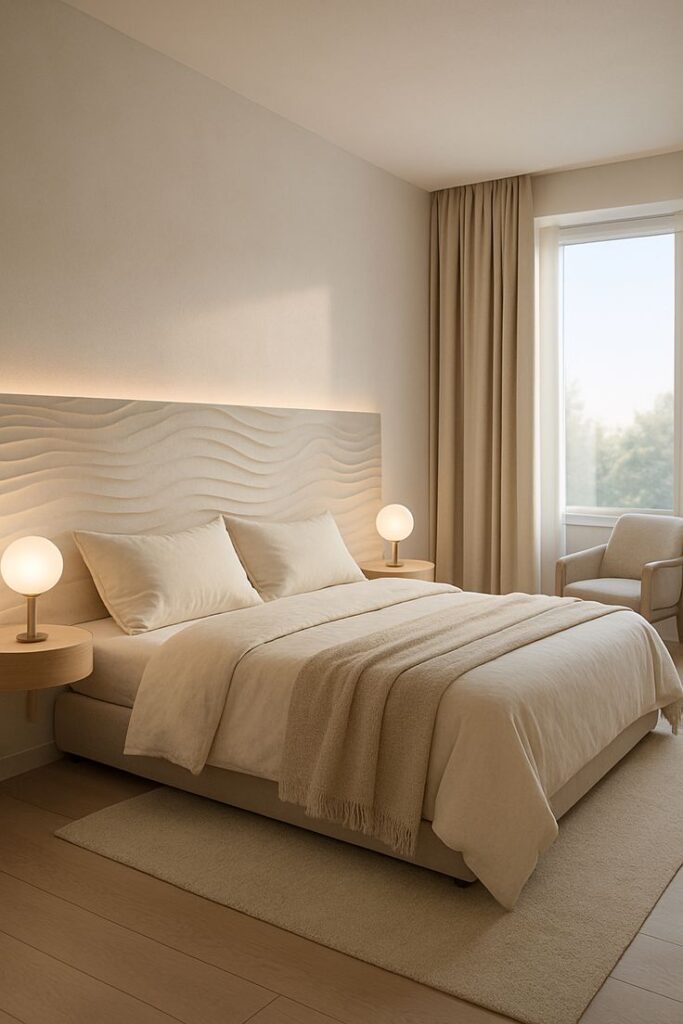
Task lighting helps with specific activities like reading or dressing. Adjustable desk lamps or wall-mounted reading lights near the bed provide focused illumination. These lights prevent eye strain and improve usability.
Accent lighting highlights bedroom features such as artwork or plants. LED strips under shelves or spotlights pointed at decor create visual interest without brightening the whole room.
Tips for effective task and accent lighting:
- Use warm, focused beams for reading lamps
- Install dimmers to control brightness
- Choose subtle fixtures that match the room style
This layered lighting approach allows for flexibility and comfort.
Personalizing Your Space With Decor
Personal touches make a bedroom feel unique and inviting. Choosing the right elements like wall art and plants can create a calm atmosphere while reflecting personality.
Curating Wall Art and Accessories
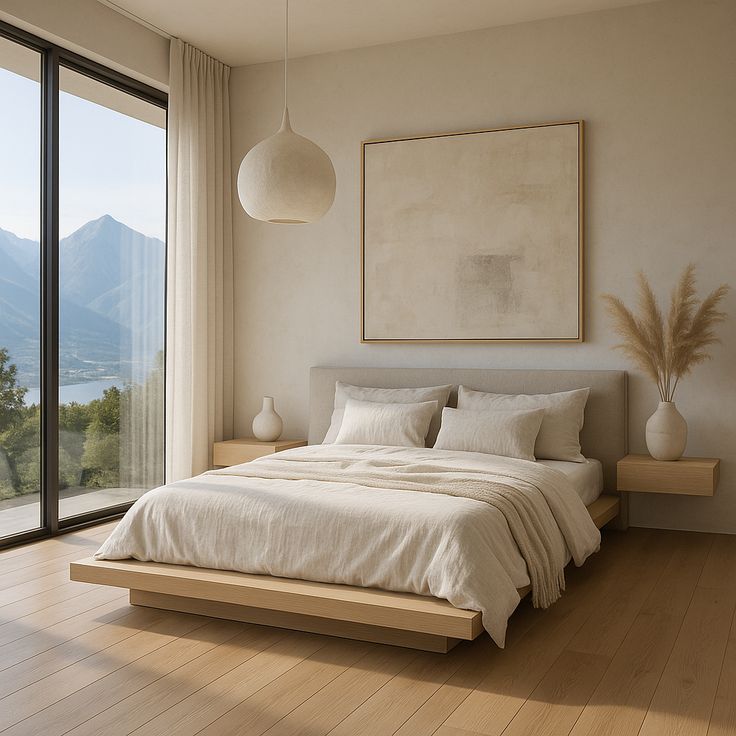
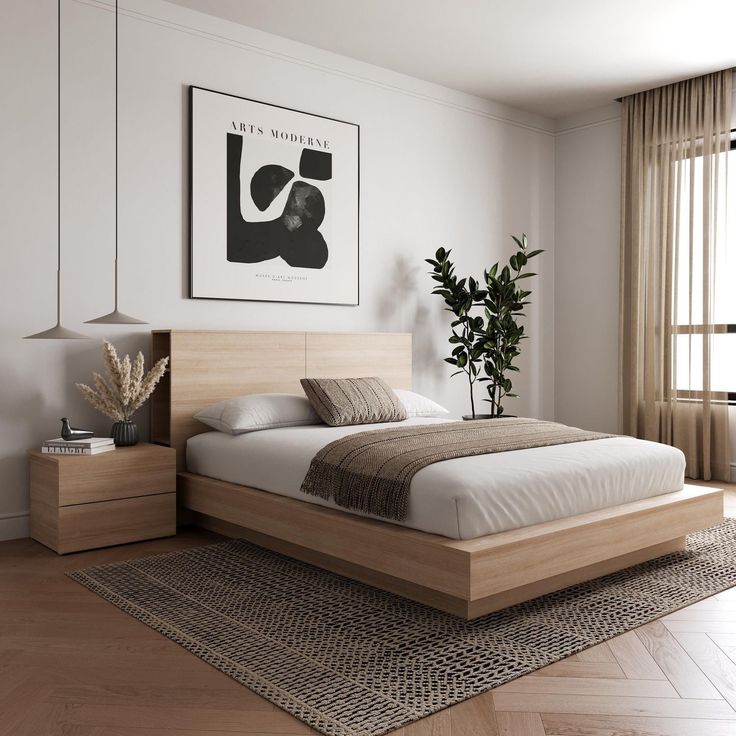
Wall art sets the tone of the room. Selecting pieces that match the color scheme or theme helps maintain visual balance. Framed prints, paintings, or photographs with soft colors or nature scenes often promote relaxation.
Accessories like cushions, rugs, and lamps add texture and interest. It is useful to pick items in muted tones or natural materials such as linen, wool, or wood. Too many bright or patterned pieces can create visual clutter and interrupt calm.
Limiting the number of decor items keeps the space feeling open. Grouping art in small clusters or using simple shelves creates focal points without overwhelming the room.
Incorporating Plants and Greenery
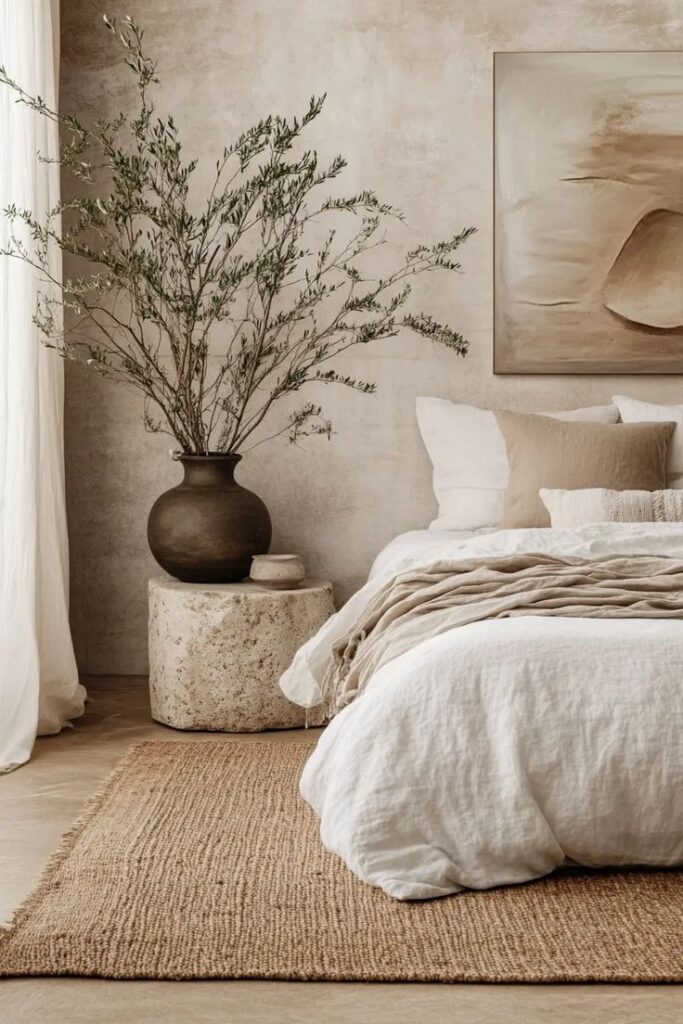
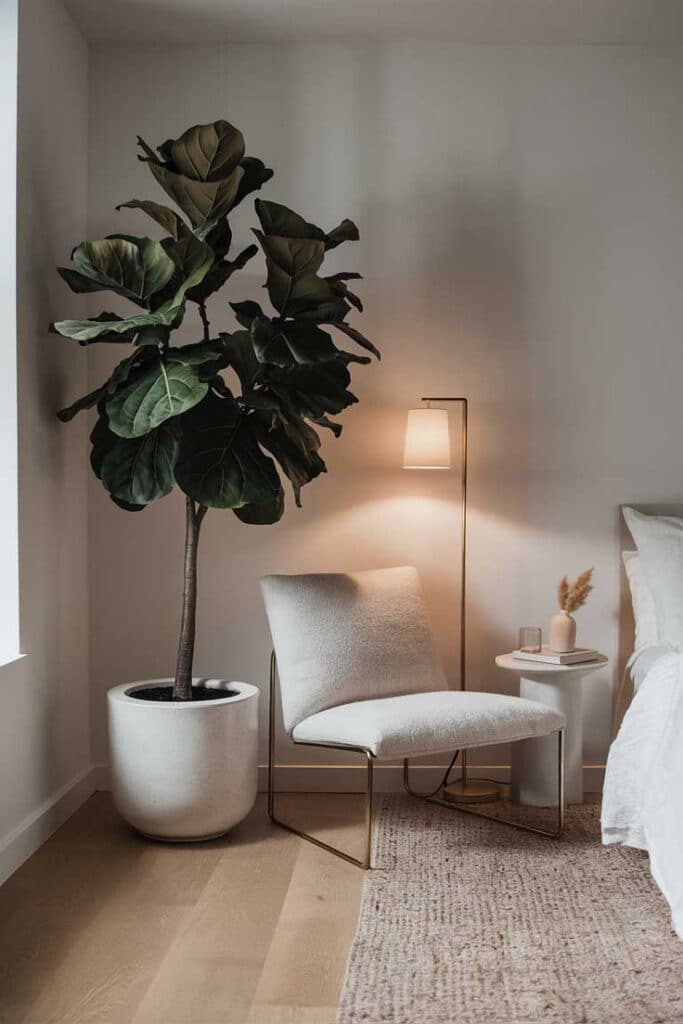
Plants improve air quality and bring natural calm to a bedroom. Low-maintenance options like snake plants, pothos, or succulents work well indoors.
Position plants near windows to get enough sunlight but avoid direct harsh light. Small plants on shelves or bedside tables add freshness without taking up floor space.
Using a few pots in simple, neutral colors keeps the look cohesive. Mixing leaf shapes and sizes adds subtle variety while maintaining a peaceful feel.
Plants also soften sharp edges in the room and create a connection to the natural world, which helps reduce stress.
Maximizing Serenity With Thoughtful Layouts
Creating a calm bedroom depends on how the space is organized. Careful choices about where to put furniture and how to arrange areas help reduce clutter and distractions. This approach supports relaxation and comfort.
Furniture Placement Strategies
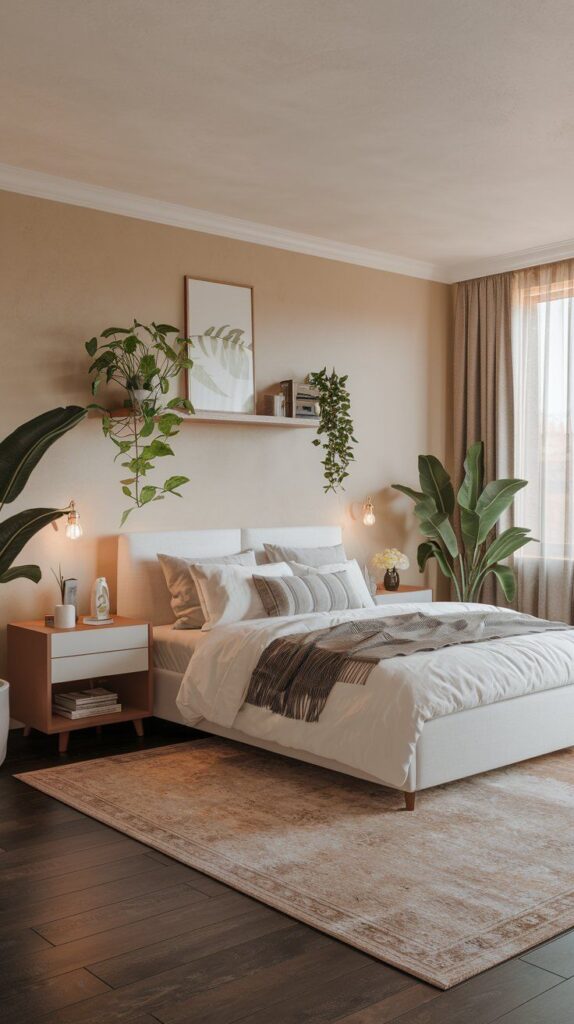
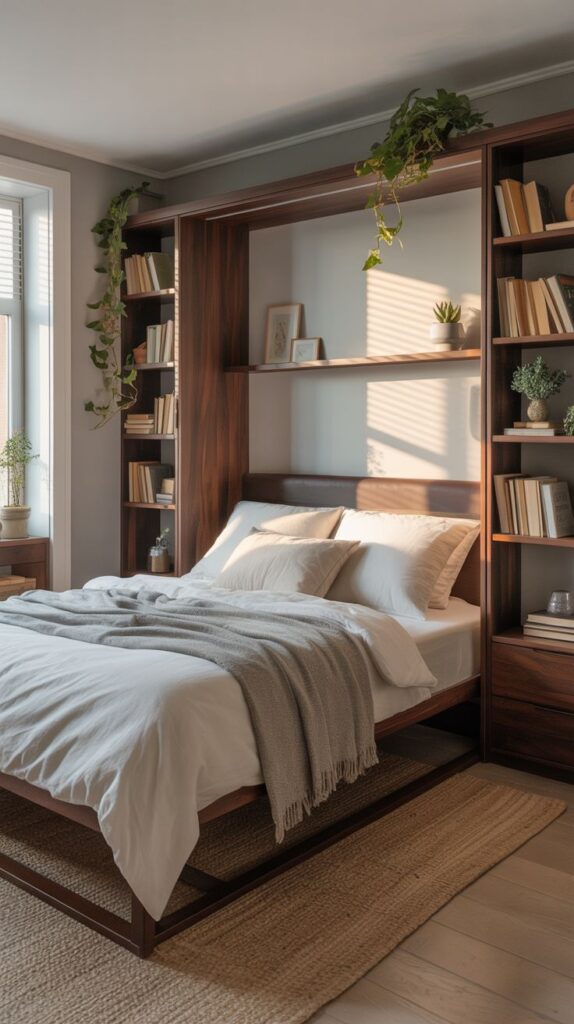
The bed is the main focus in any bedroom. Placing it away from the door but visible when entering helps create a secure feeling. Avoid pushing the bed directly against a wall if it feels cramped.
Keep pathways clear by spacing furniture to allow easy movement. Use pieces that fit the room size—oversized furniture can make the space feel crowded. Nightstands should be within arm’s reach of the bed for convenience.
Mirrors should not face the bed directly as this can disturb sleep. Position storage units along less visible walls to keep surfaces tidy and open up the room. Natural light sources near seating or reading areas add calm without glare.
Creating Defined Relaxation Zones
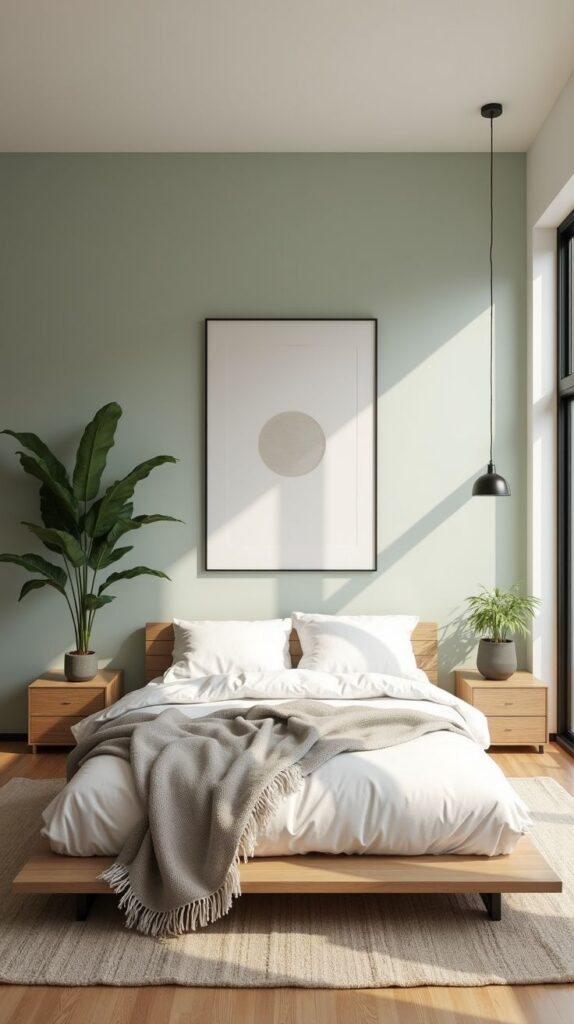
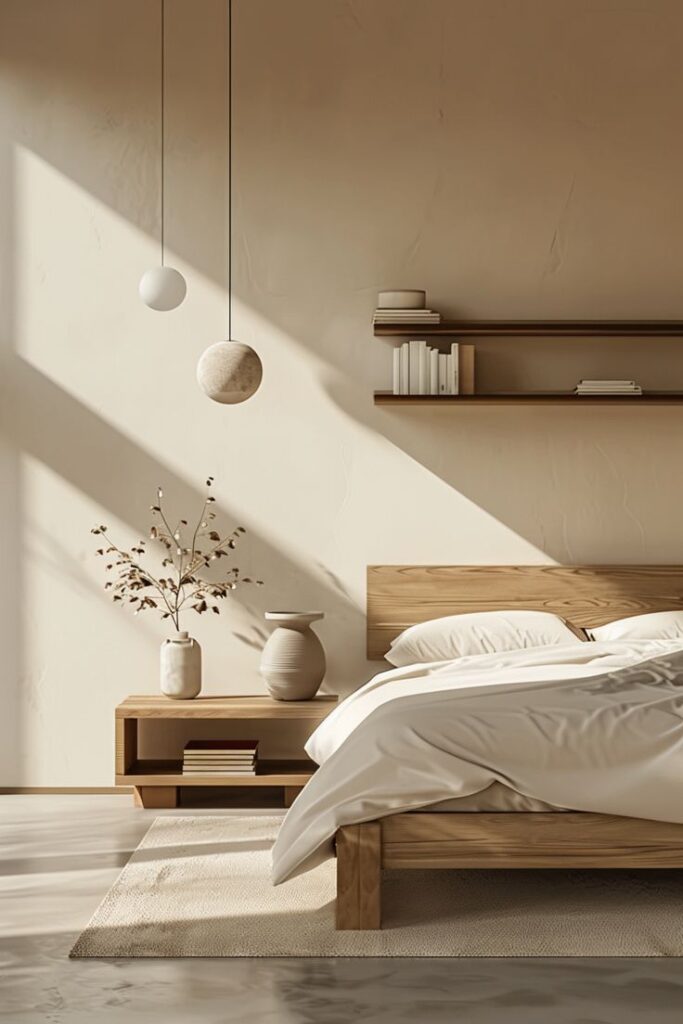
Separate spaces for different activities help the mind switch into relaxation mode. A cozy chair or small sofa with soft cushions can serve as a reading nook. Adding a small shelf or table nearby supports this function.
A corner with plants or soft lighting creates a natural calm zone. Using rugs or different flooring textures can visually mark these areas without building walls. These zones reduce distraction and help focus on resting or hobbies.
Electronic devices should be kept out of these zones to maintain tranquility. Instead, include items like books, a journal, or calming scents. These details encourage unwinding and improve overall sleep quality.
Integrating Technology Seamlessly
Technology in the bedroom should enhance comfort and calm without drawing attention to itself. Practical features can improve daily routines, while careful placement keeps the space tidy and peaceful.
Smart Home Features for Comfort
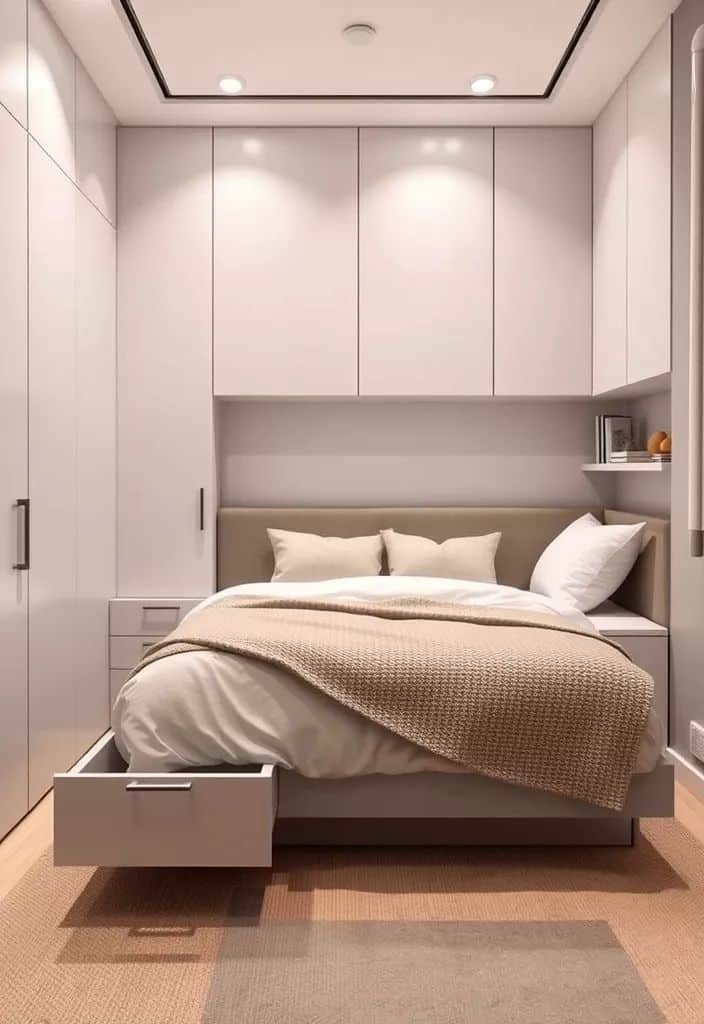
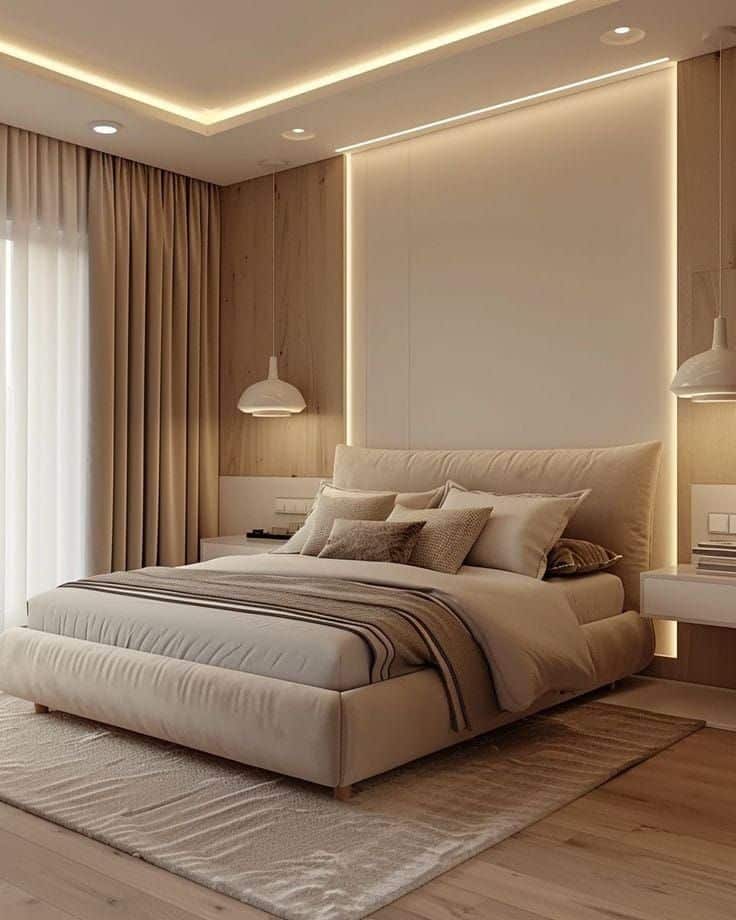
Smart lighting systems allow easy control of brightness and color temperature, which helps set the right mood. Voice-activated assistants can manage lights, temperature, and even play relaxing sounds or music without the need to leave the bed.
Automated window treatments add convenience by opening or closing blinds based on the time of day or sunlight. Smart thermostats maintain a consistent temperature, improving sleep quality.
These features focus on ease and subtlety. They reduce the need to interact with multiple devices, making the bedroom a restful space.
Minimizing Tech Clutter
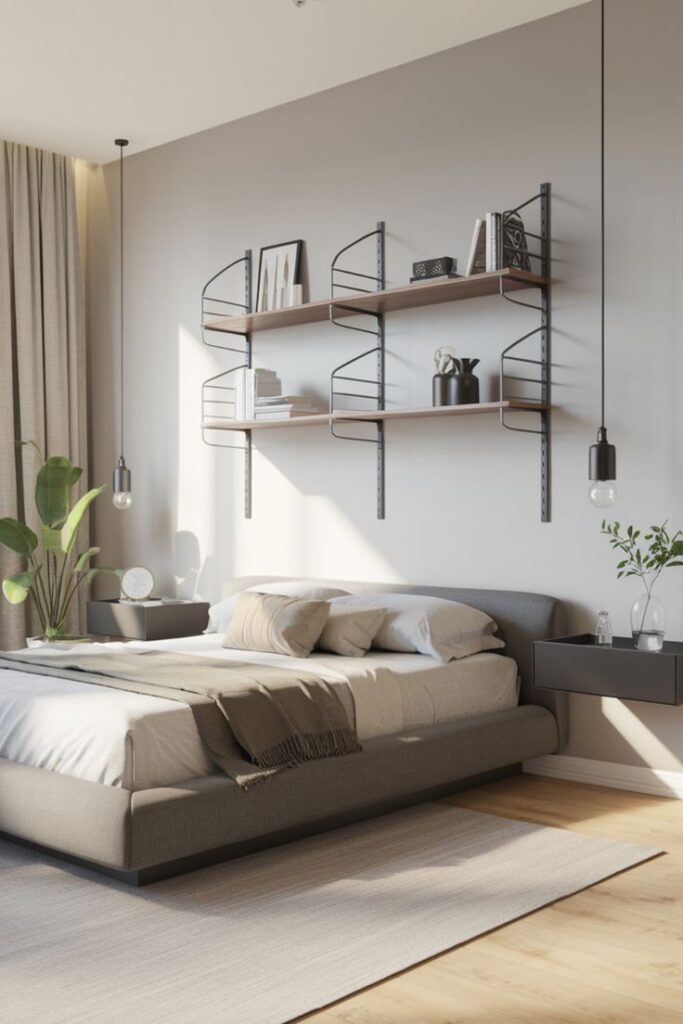
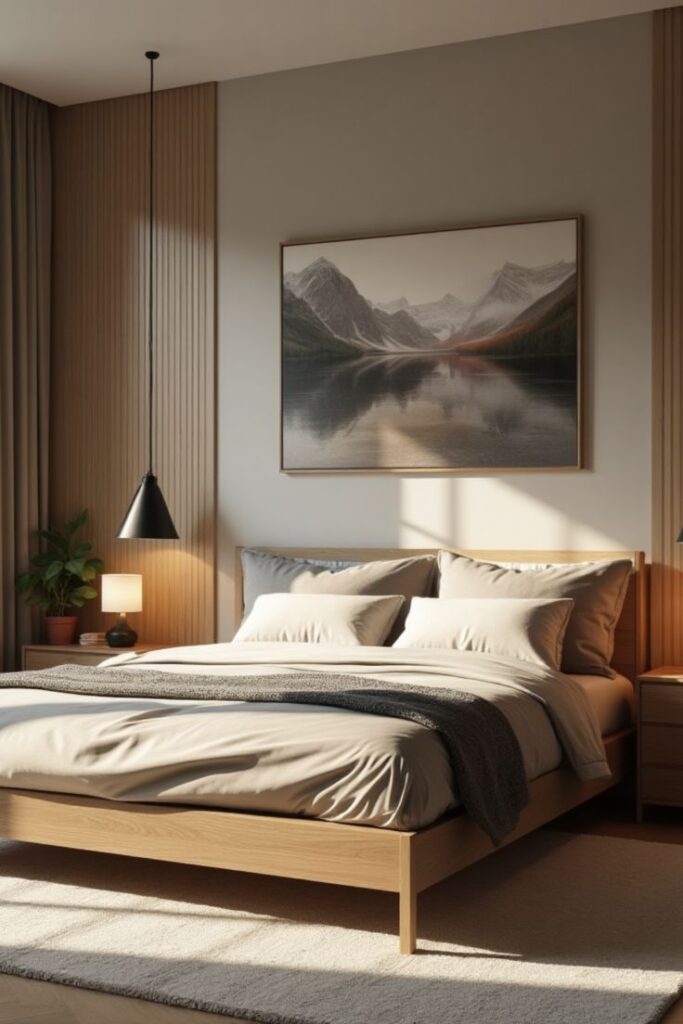
Keeping devices organized limits distractions. Using furniture with built-in charging stations can hide cables and keep gadgets in one place. Wireless charging pads help eliminate extra cords.
Mounting TVs or speakers on walls saves surface space. Small, wireless speakers or earbuds prevent large equipment from crowding the room.
Storing rarely-used items in drawers or boxes helps maintain a clean look. Minimal visible technology supports a calm, uncluttered environment.
Sustainable and Eco-Friendly Design Choices
Choosing the right materials and efficient technologies can make a bedroom both comfortable and kind to the planet. This approach helps reduce waste and lowers energy bills while maintaining a stylish look.
Eco-Conscious Materials
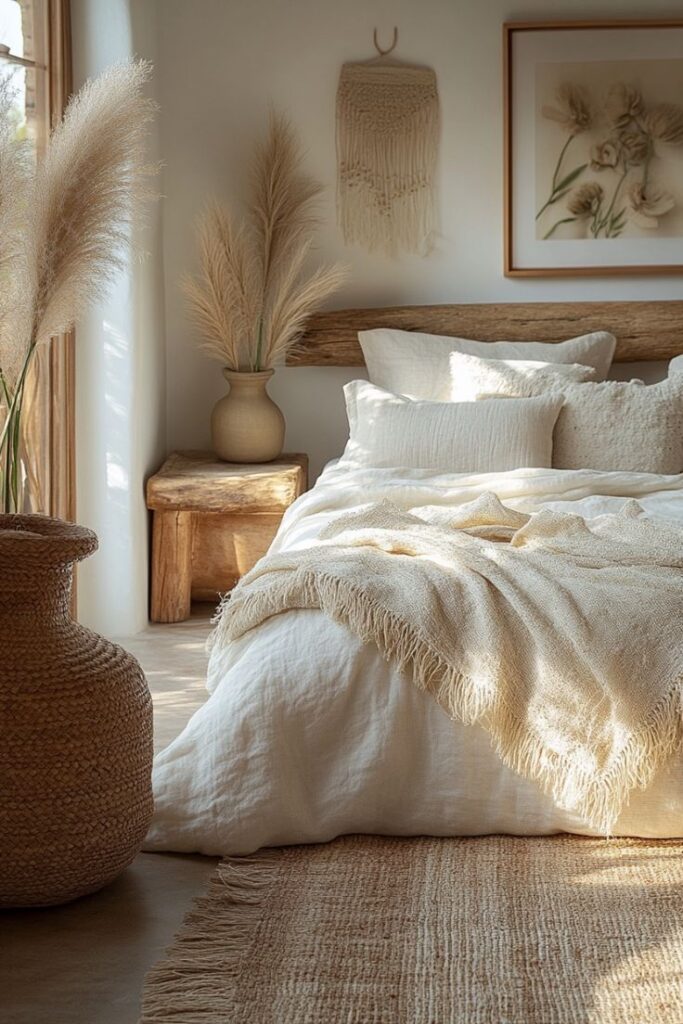
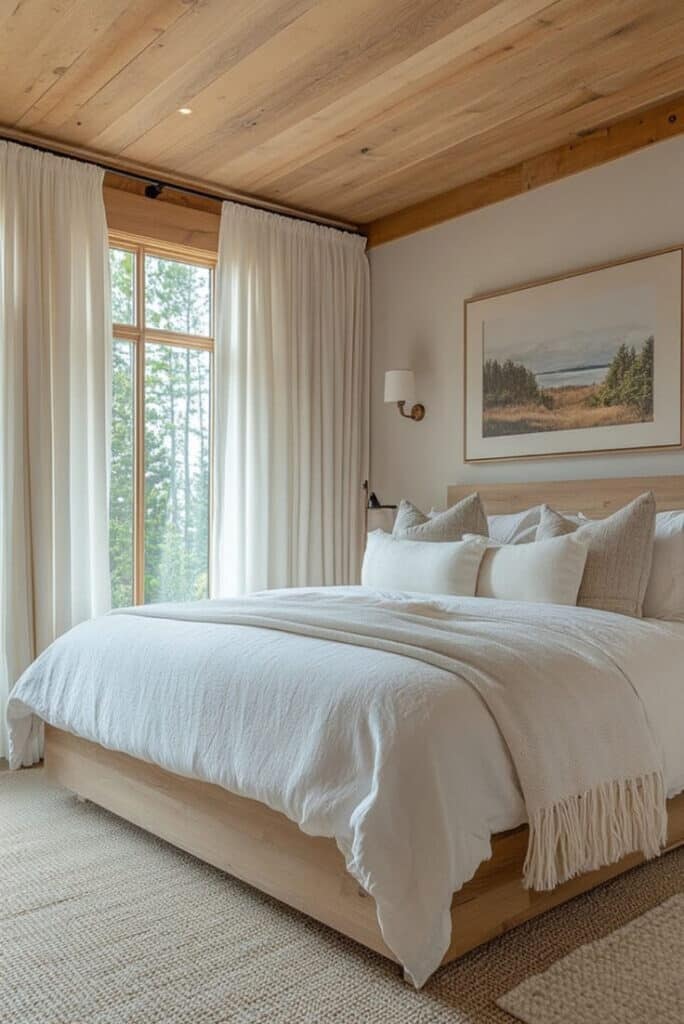
Using natural or recycled materials is key to eco-friendly design. Furniture made from reclaimed wood or bamboo offers durability and a warm feel without cutting down new trees. Organic cotton, linen, or wool bedding avoids harmful chemicals and is better for indoor air quality.
Paints and finishes with low or no volatile organic compounds (VOCs) limit indoor air pollution. Rugs crafted from natural fibers like jute or sisal add texture without synthetic dyes or plastics.
A quick list of materials to consider:
- Reclaimed or sustainably harvested wood
- Organic cotton or linen textiles
- Wool or natural fiber rugs
- Low-VOC paints and stains
Energy-Efficient Solutions
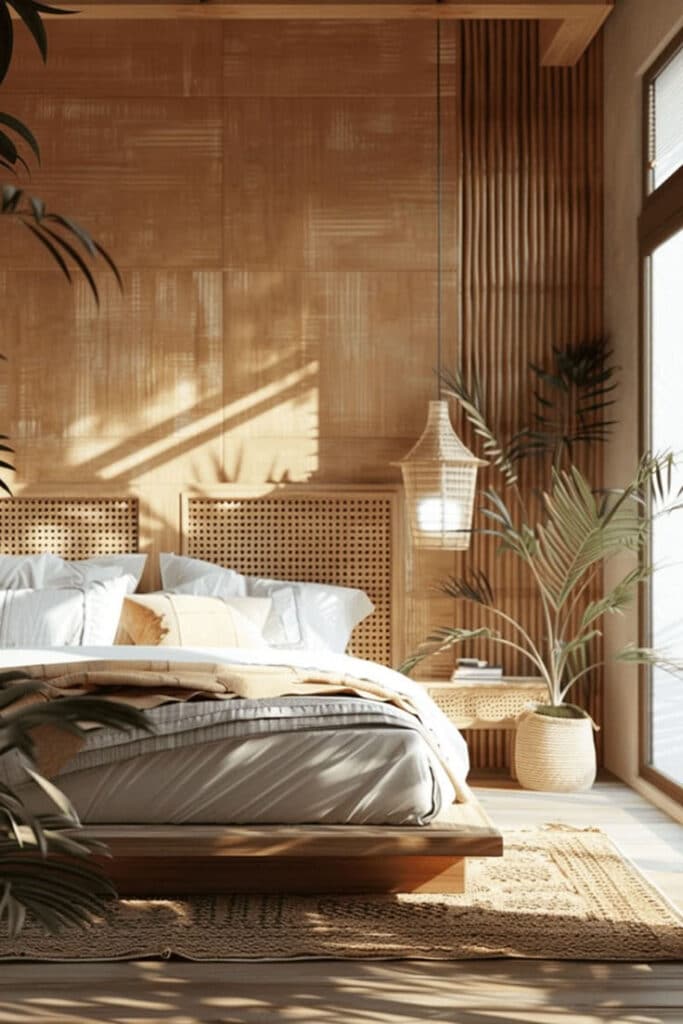
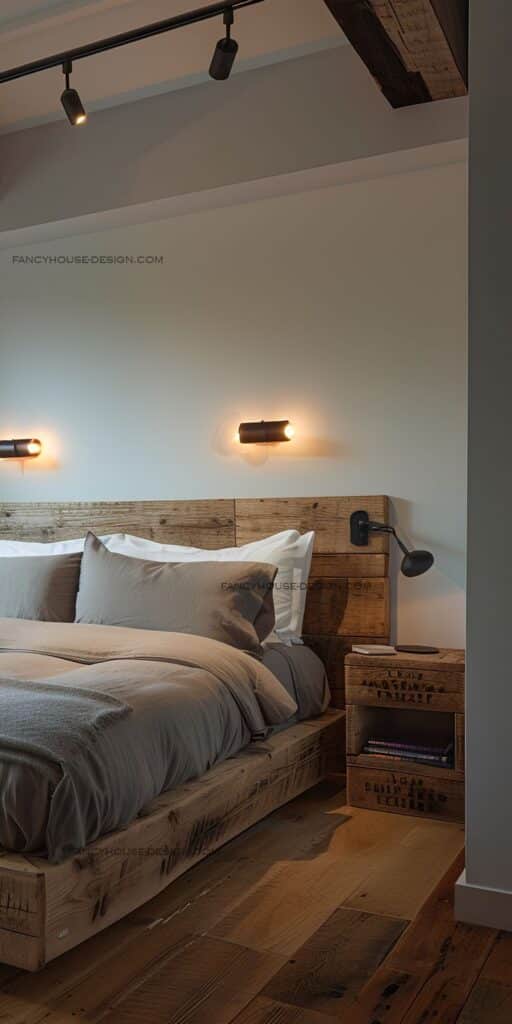
Energy efficiency keeps the room comfortable and cuts down on electricity use. LED bulbs use far less power than traditional bulbs and last longer. Installing dimmable lights provides control over brightness and mood, reducing wasted energy.
Smart thermostats or ceiling fans help regulate temperature without running the HVAC system constantly. Thick curtains or insulating window treatments keep heat in during winter and block heat out in summer, easing the load on heating and cooling systems.
Energy-saving design tips include:
- LED or CFL lighting
- Smart thermostats or programmable controls
- Insulating curtains or blinds
- Ceiling fans for air circulation
Seasonal Styling Tips for Ongoing Calm
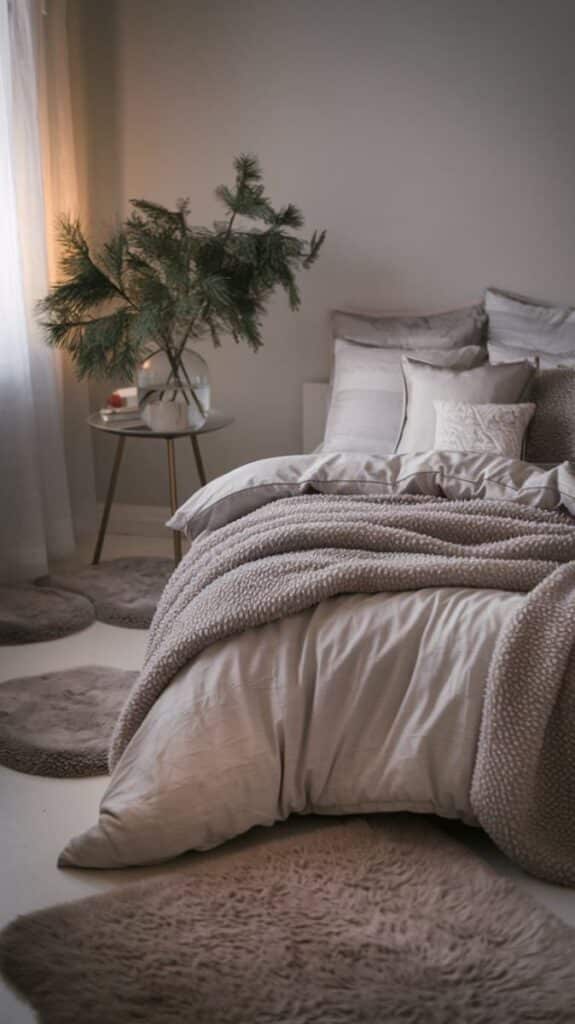
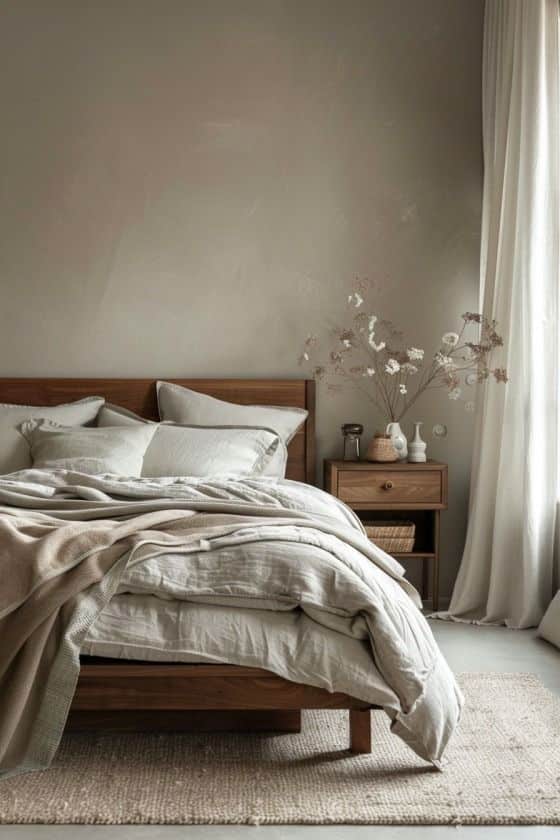
Changing bedroom decor with the seasons helps maintain comfort and calm throughout the year. Small updates can make a big difference without cluttering the space.
In spring and summer, lighter colors work best. Soft pastels or cool blues can bring a fresh, airy feel. Sheer curtains and breathable cotton bedding keep the room cool and bright.
For fall and winter, warmer tones create coziness. Earthy colors like browns, deep oranges, and warm grays add a calming atmosphere. Use thicker fabrics like wool or flannel for blankets and curtains to add warmth.
Here is a simple table to guide seasonal choices:
| Season | Colors | Fabrics | Accessories |
|---|---|---|---|
| Spring/Summer | Pastels, blues | Cotton, linen | Light rugs, plants |
| Fall/Winter | Earth tones | Wool, flannel | Heavy curtains, candles |
Lighting also matters. Natural light is great in warmer months, but soft lamps and warm bulbs help in colder months.
Switching small items, like throw pillows or rugs, keeps the style fresh without major changes. This balance of change and simplicity supports ongoing calm.
- 0shares
- Facebook0
- Pinterest0
- Twitter0

